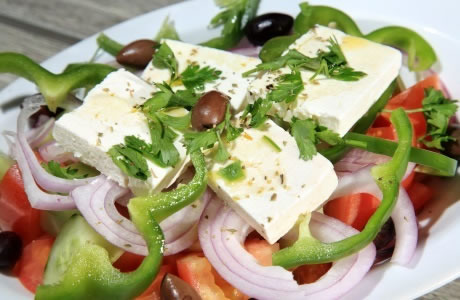In the realm of culinary delights, few dishes strike the perfect balance between health and taste quite like the Greek Salad Calories. This timeless classic has been a staple on tables worldwide, captivating taste buds with its vibrant medley of fresh vegetables, olives, and feta cheese. In this deep dive, we’ll navigate through the tantalizing universe of Greek Salad calories, shedding light on the nutritional aspects that make it a top choice for those embracing a healthier lifestyle.
Read more about Broccoli Calories
Contents
The Foundation: Fresh and Crisp Ingredients
Unveiling the Key Players
Crisp Greens
At the core of every Greek Salad, you’ll find a bed of crisp and nutrient-rich greens. Lettuce, packed with vitamins and antioxidants, forms the foundation. Opt for dark leafy varieties like romaine for an extra nutritional boost.
Vibrant Vegetables
The colorful medley of vegetables in a Greek Salad provides an array of essential nutrients. Tomatoes contribute lycopene, known for its potential health benefits, while cucumbers bring a refreshing crunch. Don’t forget the antioxidant-rich bell peppers and red onions.

The Protein Boost
Feta Cheese
Now, let’s talk about the star of the show – Feta Cheese. This creamy delight adds a savory kick and a dose of protein to your salad. Despite its rich flavor, moderation is key, as feta can be calorie-dense.
Kalamata Olives
Enter the realm of good fats with Kalamata Olives. These little bursts of flavor not only add depth but also bring heart-healthy monounsaturated fats to the table.
Understanding Macronutrients
Caloric Breakdown
Let’s delve into the caloric breakdown of a standard Greek Salad. A typical serving contains approximately 300-400 calories. The majority come from the olive oil used in the dressing, the feta cheese, and the olives. However, it’s important to note that these are nutrient-dense calories, loaded with essential vitamins and minerals.
The Dressing Dilemma
Olive Oil Elegance
The dressing is where the magic happens. Greek Salad dressing often comprises extra virgin olive oil, a heart-healthy choice that brings a distinct Mediterranean flavor. While high in calories, the monounsaturated fats in olive oil offer numerous health benefits.
Making Greek Salad Fit Your Dietary Goals
Customizing for Caloric Control
For those mindful of their calorie intake, there are ways to enjoy a Greek Salad without compromising health goals. Opt for a light dressing or control the portions of calorie-dense ingredients like feta and olives.
Adding Protein Variations
To up the protein content, consider adding grilled chicken or chickpeas to your Greek Salad. These additions not only enhance the nutritional profile but also make the salad a more substantial meal.
Conclusion
The allure of Greek Salad goes beyond its enticing flavors. Understanding the nuances of Greek Salad calories empowers us to make informed dietary choices. Embrace the freshness of crisp greens, relish the richness of feta and olives, and savor the benefits of olive oil. A well-balanced Greek Salad can indeed be a cornerstone in your journey towards a healthier lifestyle.




[…] you can even take advantage of organic juices sold at farmers markets. Discover the light side of Greek salad calories as you explore the best health benefits of green juice, embracing a nutritious lifestyle packed […]
[…] From reusable water bottles to eco-friendly lunch boxes, make an impression while keeping those Greek salad calories in […]
[…] enjoyment of meals with family and friends. When following the Mediterranean diet, a traditional Greek salad is a nutrient-dense option that typically contains around 200-300 calories per serving, making it a […]
[…] varieties for their unique flavors and colors, which range from deep purples to vibrant yellows. A Greek salad featuring seasonal summer vegetables provides a deliciously nutritious option with minimal […]